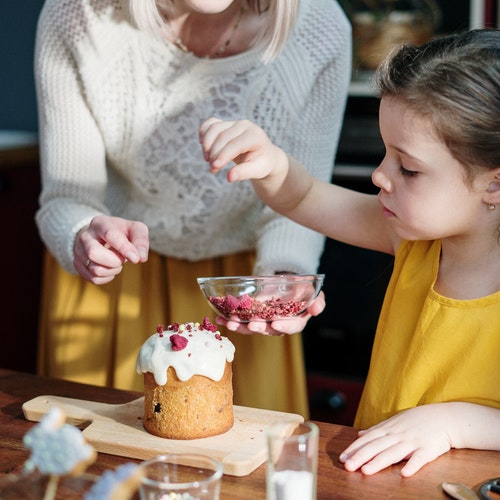
We’ve all been faced with this crossroads when opening the fridge: the loaf you bought a couple of days ago is moldy in places, your favorite jam is already showing signs of decay, or the strawberries have tiny spores that have ruined your plan to make some dessert with them.
Despite the warning signs, many people refuse to throw away food when it is moldy or insists on rescuing the part that this type of fungus has not invaded; however, this issue goes much further because the information we are about to reveal to you will surprise you. Here’s what to do with food when it’s moldy!
What is mold?
The mold that appears on food is a type of fungus that is microscopic and produces spores, which travel through the air, insects, or water. Once they contaminate a surface, they form a kind of root, which can invade the food inside, not just on the surface. Even more alarming is that experts from the US Department of Agriculture say that if food is moldy, there’s also likely to be invisible bacteria growing along with the mold.
On the other hand, this institution points out that certain types of mold “cause allergic reactions and respiratory problems and a few types of mold, in the right conditions, produce ‘mycotoxins’, toxic substances that can make you sick.”
What to do with food when it is moldy?
The answer is a bit complicated because, in some cases, it is recommended to throw away the moldy food, but in others, it is only necessary to remove the affected part and consume the rest; here, we explain what you should do in detail.
The United States Department of Agriculture points out that, although we only see mold on the surface, this fungus has already invaded at the root and explains that in the case of mold that is dangerous, “toxic substances are often found in and around” spores, and in some cases toxins, spread throughout the food, so he recommends the following:
1. Buy the amount of food you will use and cook it as soon as possible.
2. If you see mold on any food, do not smell it because you could get a respiratory illness.
3. Clean the refrigerator or cupboard if you discover something moldy.
However, you don’t need to throw away all the products, but this will depend on the type of food; here, we tell you which ones are thrown away and which are not.
When it comes to mold, there are some exceptions, such as firm fruits and vegetables such as carrots, bell peppers, cabbage, apples, and more. The Department of Agriculture of the neighboring country indicates that if it has mold, you can remove the affected part and a little more, about 2.5 cm around, taking care that the knife does not touch the mold, as it could spread it.
In the case of hard cheeses, such as Cotija, Gruyère, Manchego, Parmesan, and Pecorino, it is unnecessary to throw away the whole piece either since it is enough to remove the part with mold and a little more, about 2.5 cm around.
In the case of soft-textured fruits and vegetables, such as tomatoes, cucumbers, and peaches, it is best to throw away the entire piece since the mold is already inside the food. Discarding meat, sausage, bacon, chicken, casseroles, rice, quinoa, pasta, cream cheese, cottage cheese, yogurt, cream, gelatin, jam, bread, crackers, and peanut butter once you detect mold on them.
How to fight mold?
Before you panic, it’s essential to consider the following if you find any moldy food inside your refrigerator.
1. Cleanliness is critical. Remember to wash your refrigerator frequently, while you should wash your utensils and rags every day.
2. If you have Tupperware or containers, ensure you wash them well, as the packages tend to fill with mold after some time.
3. Change the sponge and kitchen rags when dirty, or the whey can spread mold.
How to avoid mold in food?
The US Department makes several recommendations to prevent mold from growing on food:
1. Do not leave perishable food out of the refrigerator for more than 2 hours.
2. Consume leftover food within 3-4 days of preparation.
3. If you’ve opened a can and aren’t going to use all of the product, pour the rest into a container, cover it, and put it in the refrigerator immediately.
4. When serving food, it is best to cover it with plastic or a lid, as mold spores spread through the air.



